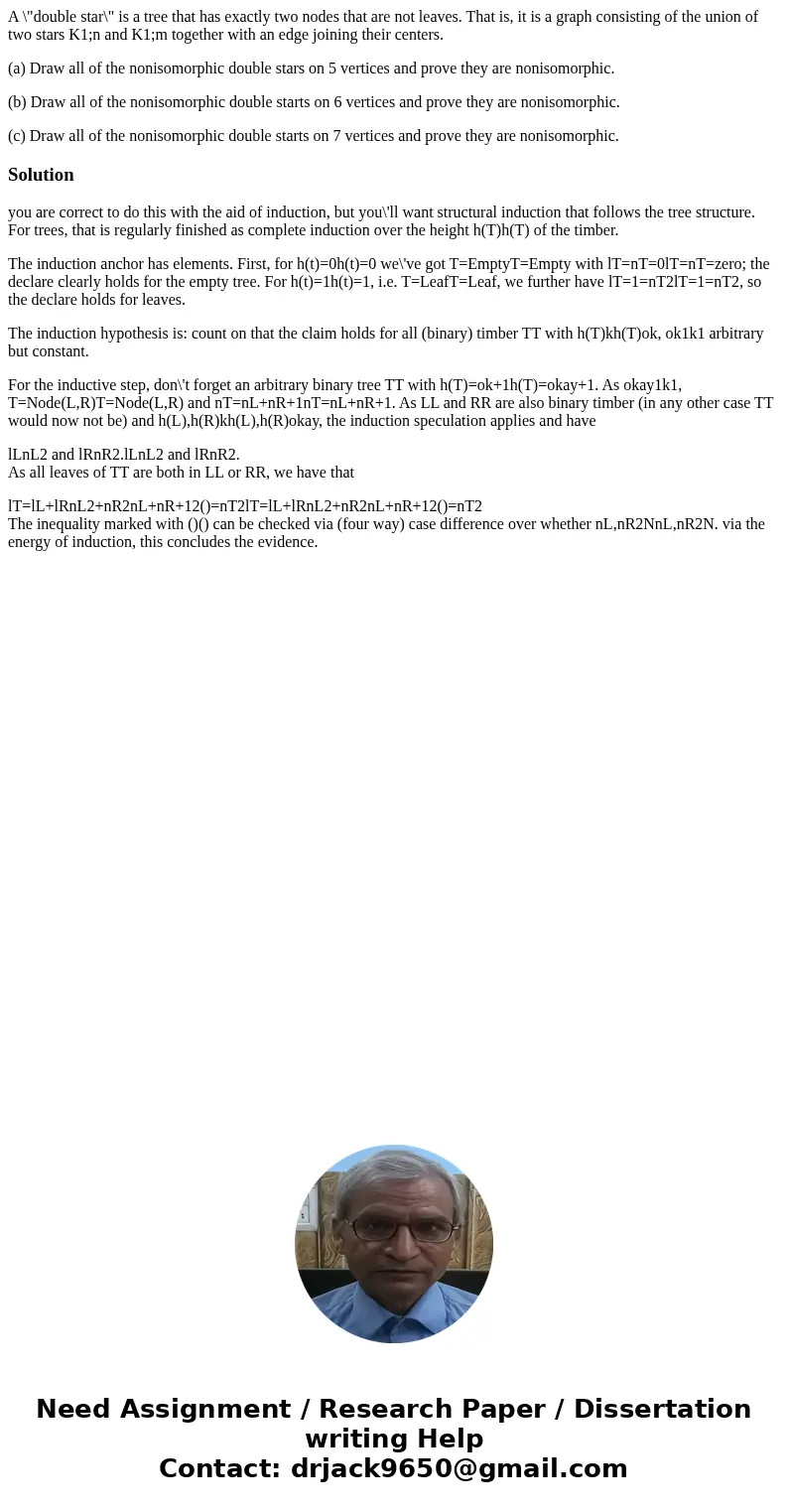A double star is a tree that has exactly two nodes that are
A \"double star\" is a tree that has exactly two nodes that are not leaves. That is, it is a graph consisting of the union of two stars K1;n and K1;m together with an edge joining their centers.
(a) Draw all of the nonisomorphic double stars on 5 vertices and prove they are nonisomorphic.
(b) Draw all of the nonisomorphic double starts on 6 vertices and prove they are nonisomorphic.
(c) Draw all of the nonisomorphic double starts on 7 vertices and prove they are nonisomorphic.
Solution
you are correct to do this with the aid of induction, but you\'ll want structural induction that follows the tree structure. For trees, that is regularly finished as complete induction over the height h(T)h(T) of the timber.
The induction anchor has elements. First, for h(t)=0h(t)=0 we\'ve got T=EmptyT=Empty with lT=nT=0lT=nT=zero; the declare clearly holds for the empty tree. For h(t)=1h(t)=1, i.e. T=LeafT=Leaf, we further have lT=1=nT2lT=1=nT2, so the declare holds for leaves.
The induction hypothesis is: count on that the claim holds for all (binary) timber TT with h(T)kh(T)ok, ok1k1 arbitrary but constant.
For the inductive step, don\'t forget an arbitrary binary tree TT with h(T)=ok+1h(T)=okay+1. As okay1k1, T=Node(L,R)T=Node(L,R) and nT=nL+nR+1nT=nL+nR+1. As LL and RR are also binary timber (in any other case TT would now not be) and h(L),h(R)kh(L),h(R)okay, the induction speculation applies and have
lLnL2 and lRnR2.lLnL2 and lRnR2.
As all leaves of TT are both in LL or RR, we have that
lT=lL+lRnL2+nR2nL+nR+12()=nT2lT=lL+lRnL2+nR2nL+nR+12()=nT2
The inequality marked with ()() can be checked via (four way) case difference over whether nL,nR2NnL,nR2N. via the energy of induction, this concludes the evidence.

 Homework Sourse
Homework Sourse